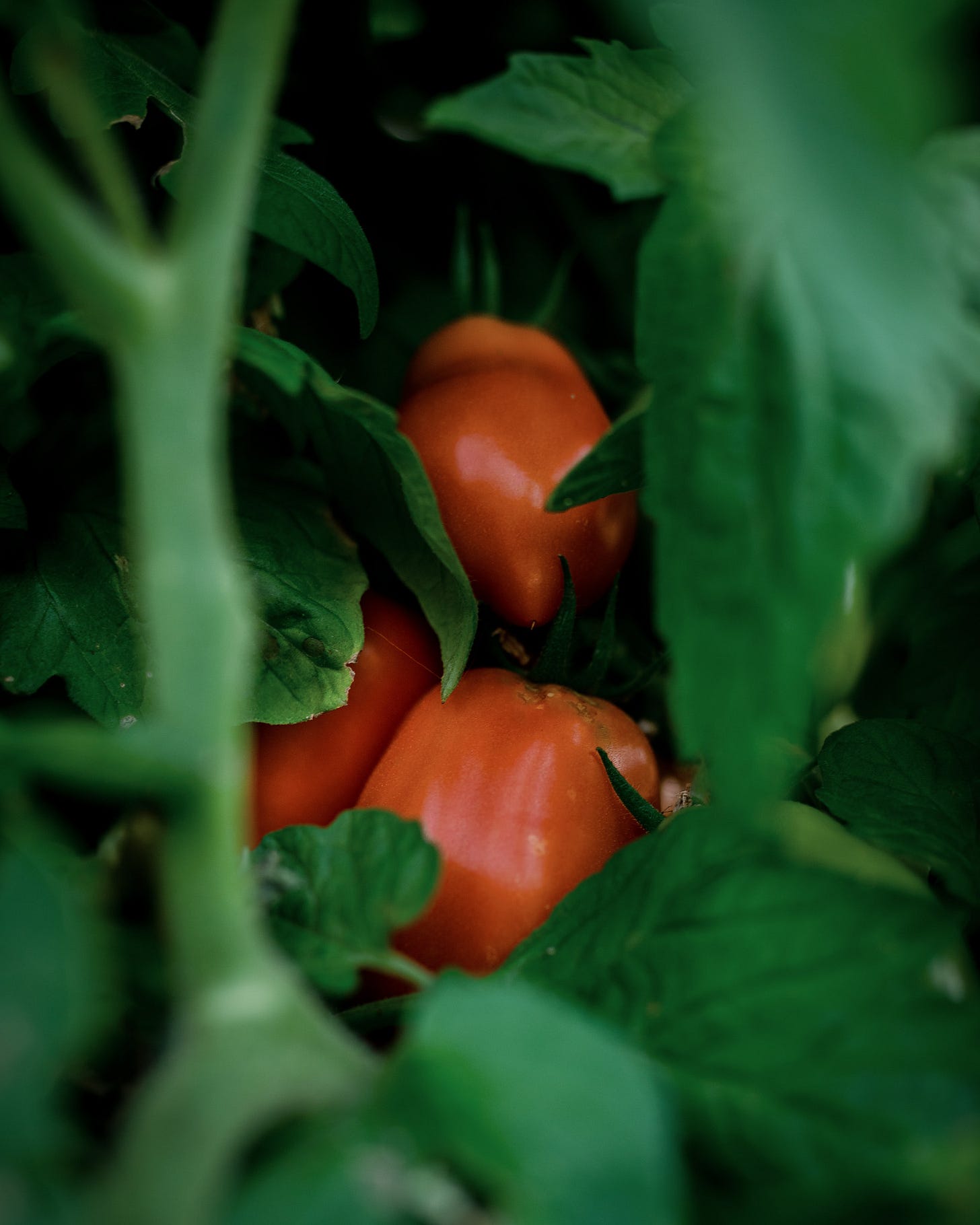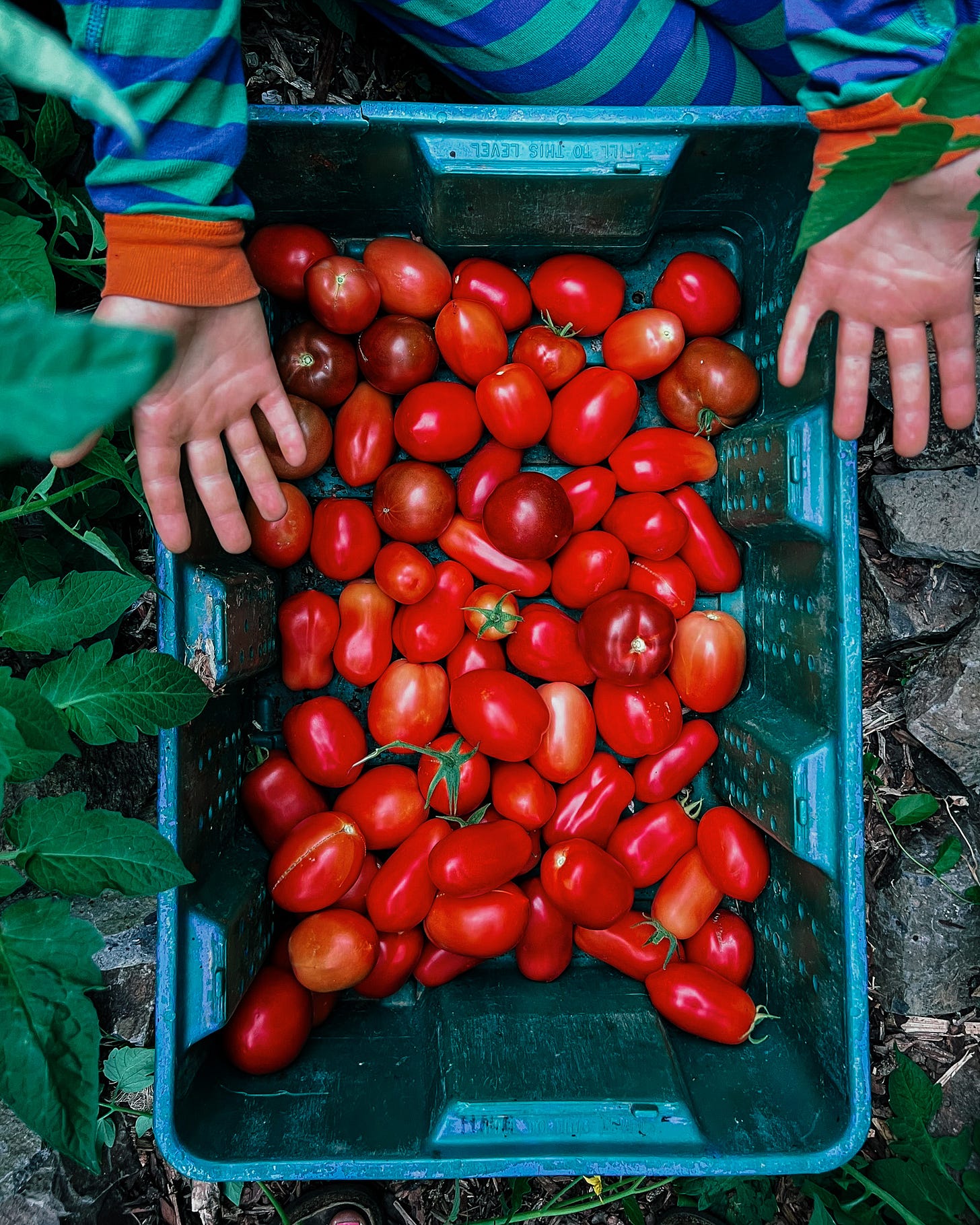The way Italians Taught Me To Make Tomato Passata
For full recipe archives, instructional videos, and searchable categories, join our Cooking Community here.
Hello my friends,
I’m back in the work-saddle after over a week away in South Carolina. The intention wasn’t to completely fall out of the work-saddle, but as fate would have it, my laptop broke just a day into our southern adventure and I’m too old for typing out my thoughts on a phone. Whose fingers work like that anyway?!
I came back from our two-weddings-and-a-funeral whirlwind of a trip eager to write, edit photographs, and pick tomatoes. I’ll share more on the trip later… but first, let’s get back to the entire point. TOMATOES.

I hadn’t even unpacked my suitcase before I ventured out into the vastly overgrown and under-cared-for gardens of late August. The dill is long gone to seed, the cabbages have been given over to the moths, and the watermelon trellis that I held such high hopes for is all but laying flat on the ground. Still, I marched on to the tomatoes. The reward for my twenty minutes of picking was two lugs of San Marzano-style tomatoes and thus I spent my first day home canning 26 additional quarts of tomato passata by myself.
Demanding, repetitive tasks are good for settling the soul.
Before we left on our trip, I made the first batch of passata for the season. For me, there’s no tomato product that we put up in the summer that’s as valuable. Passata is not cooked down deep and rich like other sauces - it’s bright red and vibrant. It tastes as close to a perfect summer tomato as you can get. This is the sauce that I use on pasta, on pizza, in soups, and over roasts. It’s my one-size-fits-all tomato preserve. And it’s not hard to make either, so long as you’re willing to wash the dishes.
The steps for perfect passata are simple:
Cut the tomatoes and cook them for 25 minutes, until solids and liquids seperate
Run the tomatoes through some sort of colander, food mill, or saucer
Can

The first Italian to teach me this sauce was from Bologna. She was taught to make it plain-Jane, like I do in the video. It’s tradition in certain families to add cloves of garlic, stems of basil, even a roasted red pepper or two. As was the case with the second Italian to teach me this sauce, who was from Sicily. She added one onion to her pot of tomatoes and pinch of sugar. One of my very favorite parts about not being Italian is that I don’t have anyone yelling at me telling me I have to do it this way or that. There’s no Nonna waiting to hit the back of my hand for making the sauce wrong. There is no ‘wrong’ in my kitchen. There’s just a beautiful mixture of what I’ve learned, what I grow, and what I like to eat.
I’ve never been one to follow rules anyway.
I hope you enjoy our time together making this beautiful tomato passata. This is now a tradition in my home that I look forward to each season.
Enjoy!
Shaye
